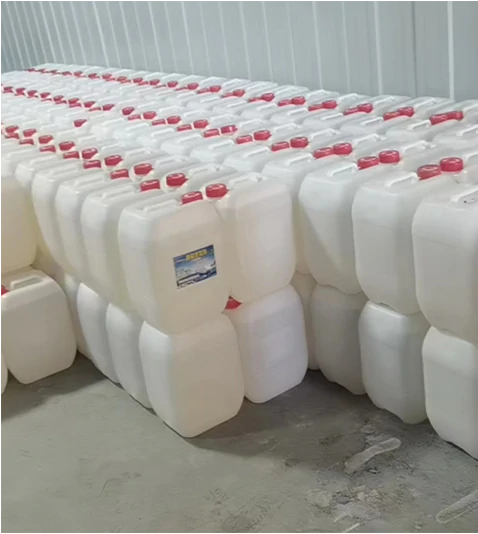
Nov . 11, 2024 14:07 Back to list
glacial acetic acid water content
Understanding the Water Content in Glacial Acetic Acid
Glacial acetic acid, a concentrated form of acetic acid with a purity of over 99%, is a vital chemical in various industrial and laboratory applications. Its unique properties make it an essential reagent in organic synthesis, food preservation, and the production of acetates. However, one of the critical aspects of handling and utilizing glacial acetic acid is understanding its water content and how it interacts with moisture.
Glacial acetic acid is named for its ability to form ice-like crystals at temperatures below 16.6°C (62°F). In its pure form, it is free of water, giving it the designation glacial. However, in practice, even the slightest exposure to moisture can lead to the introduction of water into the acetic acid. This is crucial because the presence of water can significantly alter the chemical behavior of acetic acid and its interactions in various applications.
Water content in glacial acetic acid is significant for both commercial and laboratory settings. For industrial applications, the water content can affect the yield and efficiency of chemical reactions. In processes such as esterification, where acetic acid is reacted with alcohol to produce esters, the presence of water can shift the equilibrium of the reaction, often leading to lower yields and purity. Therefore, maintaining low water levels is paramount for achieving optimal results.
Moreover, glacial acetic acid is hygroscopic, meaning it has the ability to absorb moisture from the air. This characteristic necessitates careful storage and handling. It should be stored in tightly sealed containers to minimize exposure to humidity. For laboratories that require precise measurements and concentrations, the introduction of even a small amount of water can lead to significant inconsistencies in experiments.
glacial acetic acid water content

Analytical methods are often employed to determine the water content in glacial acetic acid. Techniques such as Karl Fischer titration are widely used to quantify water levels accurately. This method is particularly effective because it allows for the detection of even minute amounts of water, ensuring that the acetic acid's purity is maintained.
In addition to technical implications, understanding the water content in glacial acetic acid is crucial from a safety perspective. Water can also affect the corrosiveness and handling properties of the acid. With increased water content, glacial acetic acid can form a more dilute solution, which might seem less hazardous. However, it is vital to remember that even dilute acetic acid can cause skin irritation and can be harmful if ingested. As such, personal protective equipment must always be used when handling even small quantities of acetic acid.
From an environmental standpoint, the management of waste products containing glacial acetic acid is also influenced by its water content. Disposal regulations may differ based on the concentration of the acetic acid and the associated risk factors. Thus, accurate knowledge of the water content helps in proper handling and compliance with local environmental regulations.
In conclusion, while glacial acetic acid is an invaluable chemical in various fields, its water content plays a crucial role in its effectiveness, handling, and safety. By understanding how water interacts with glacial acetic acid, users can better manage its properties and maximize its utility in both laboratory and industrial applications. Whether in chemical synthesis, food processing, or environmental considerations, a thorough grasp of the water content in glacial acetic acid remains indispensable for ensuring optimal performance and safety.
-
SmartAgri Solutions - Precision Farming&Soil Monitoring
NewsJul.13,2025
-
Industrial Solutions-Example Inc.|Smart Manufacturing&Energy Efficiency
NewsJul.13,2025
-
Food Grade Glacial Acetic Acid-Pure Quality|High-Purity Acetic Acid,Food-Grade Chemical
NewsJul.13,2025
-
Industrial Efficiency Solutions-NextGen Technologies|Advanced Automation&Data-Driven Analytics
NewsJul.12,2025
-
Smart Manufacturing Solutions-Example.com|Enhance Efficiency&Reduce Costs
NewsJul.12,2025
-
Food grade glacial acetic acid
NewsMar.07,2025
